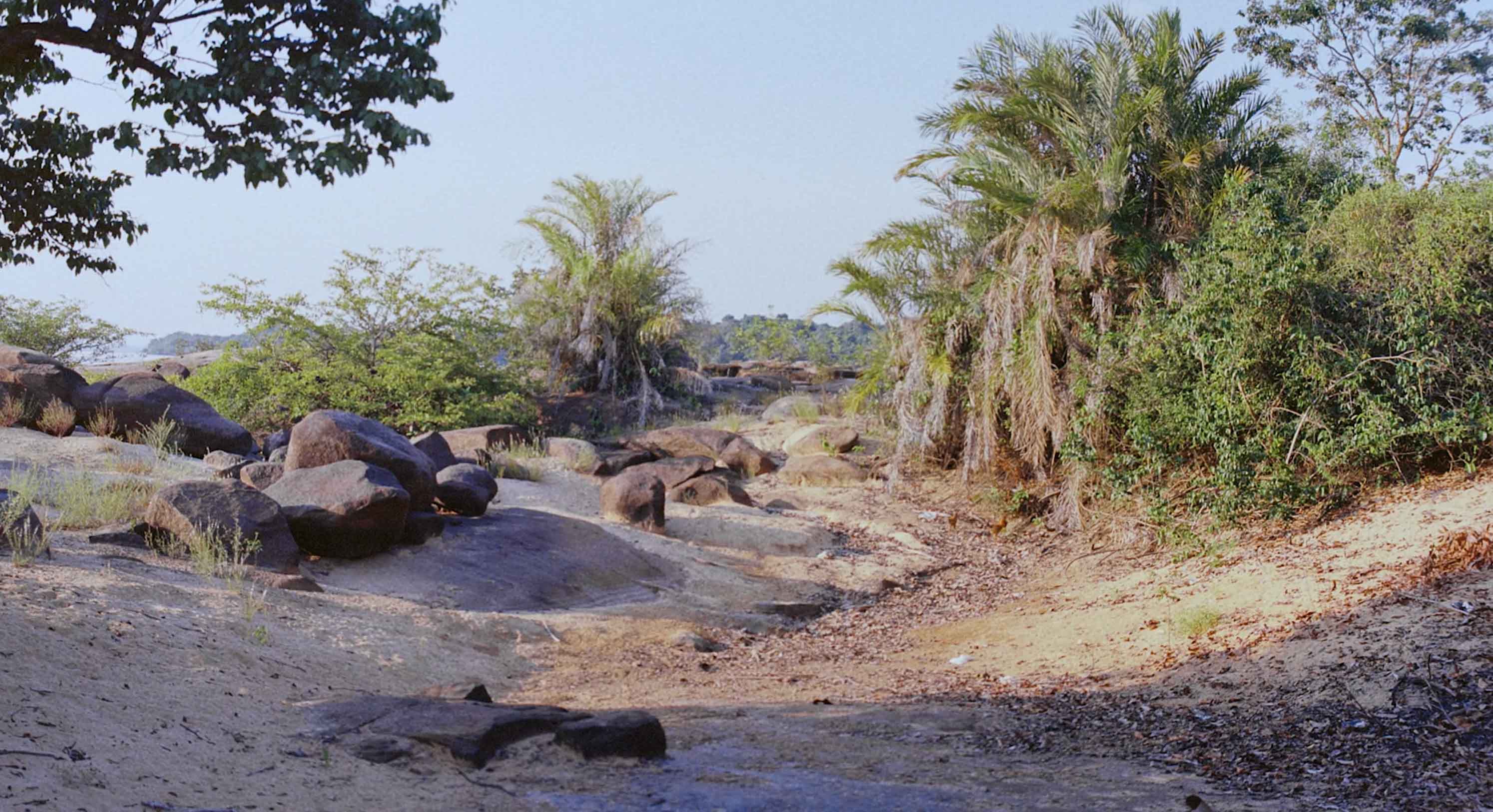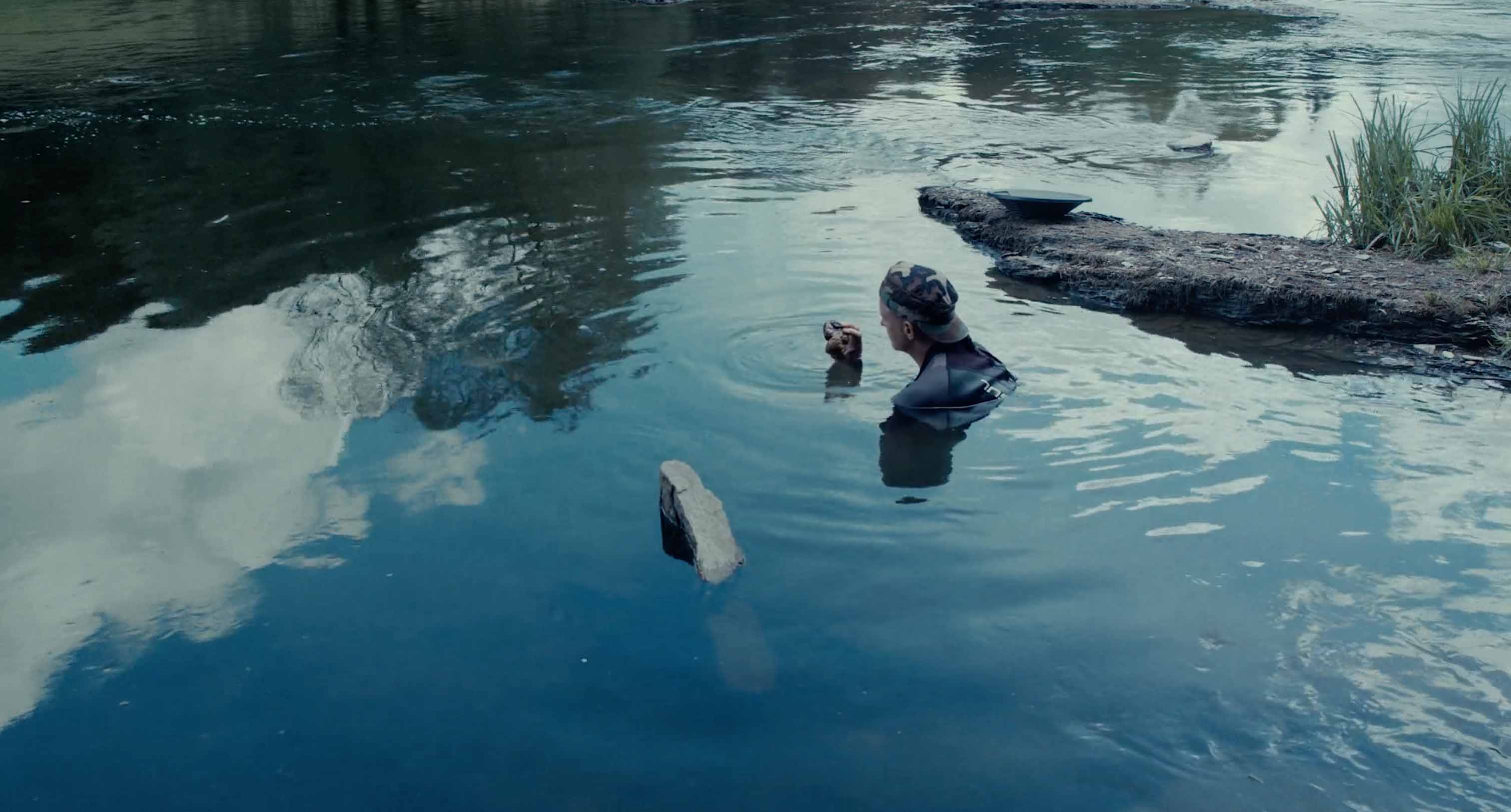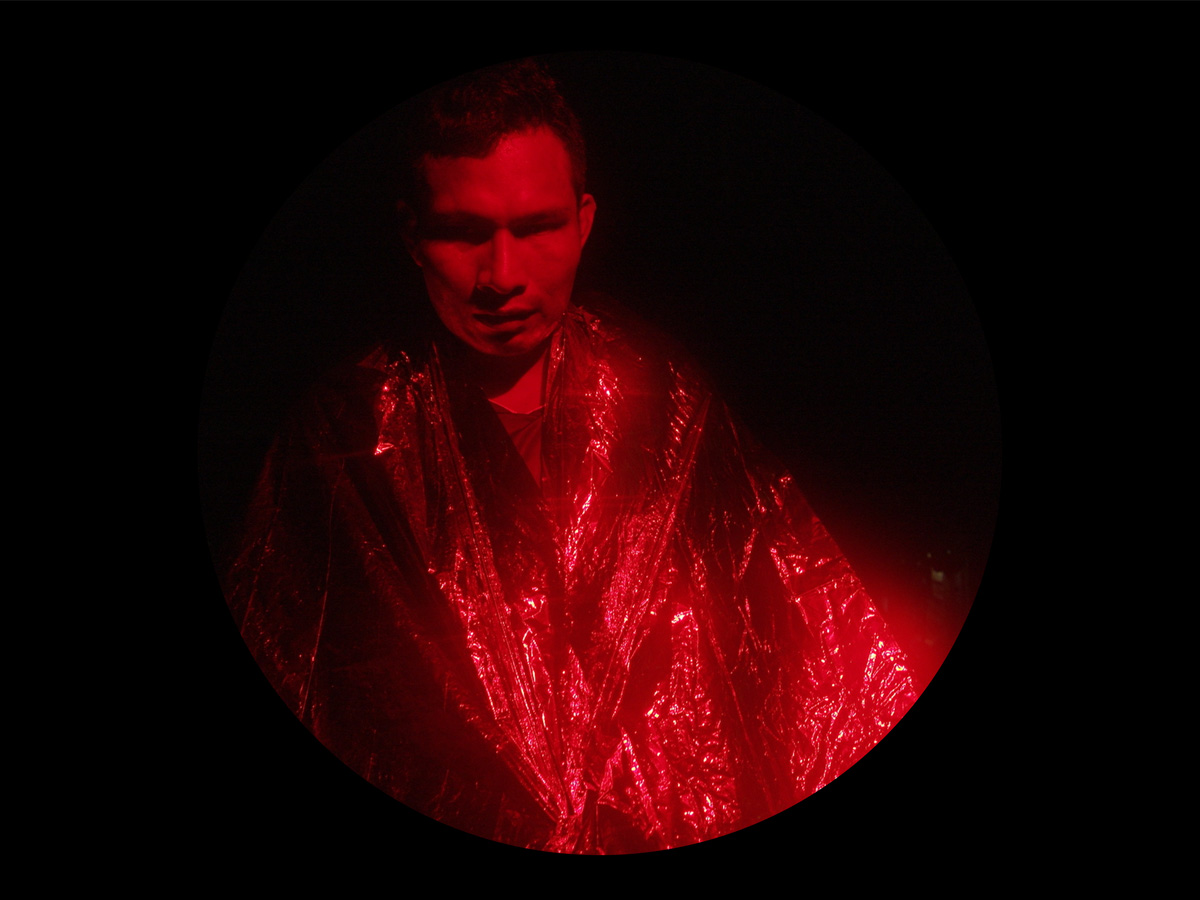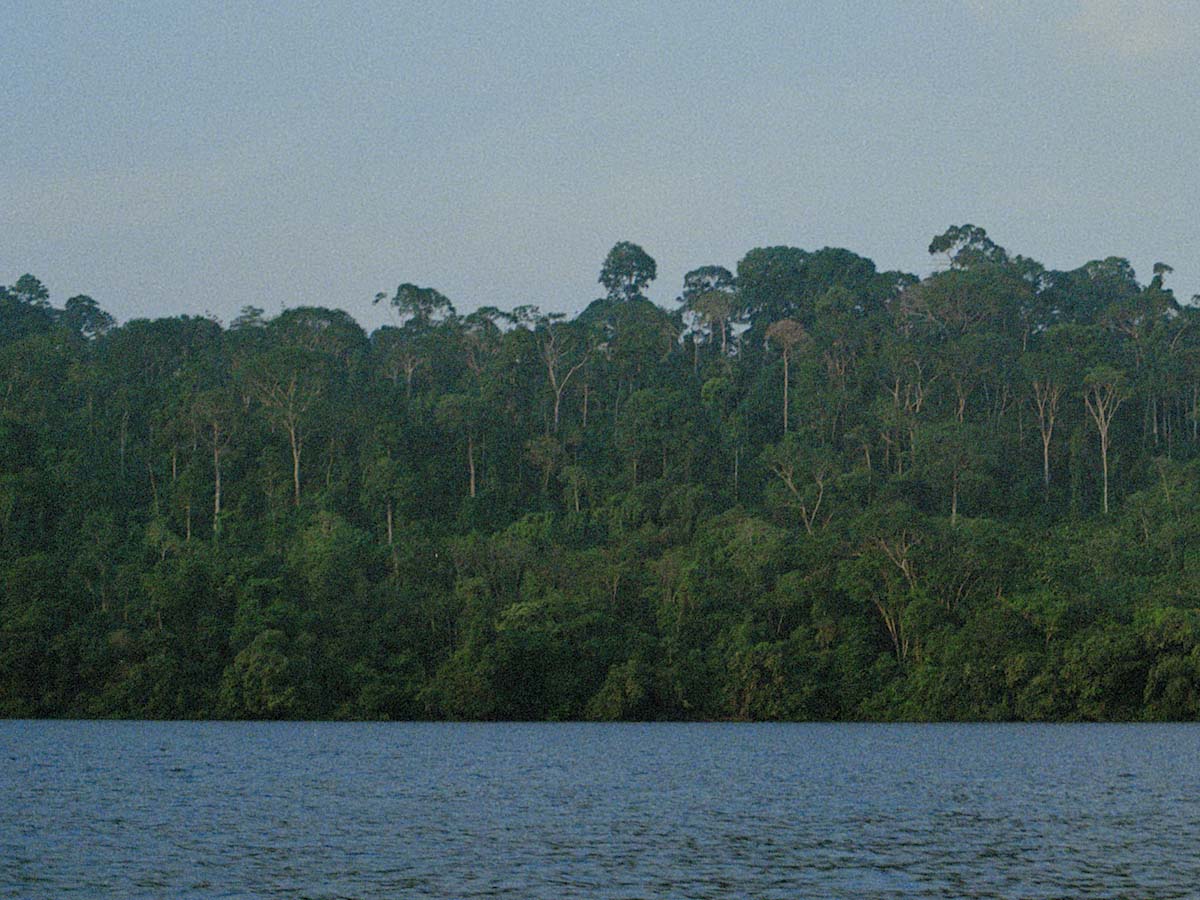
From the Ardennes to the Amazon
A Conversation About Eco-Activism in Cinema
Kortfilm.be’s video-on-demand catalogue proudly features the Colombian film Yarokamena and the Brazilian 0.2 Milligrams of Gold. Both shorts use the mighty Amazon forest as a starting point to explore themes such as the ecological crisis and the lingering impact of colonialism and capitalism. Yarokamena is the story of a member of the indigenous Uitoto tribe who raised arms to resist rubber exploitation in Casa Arana, Colombia, at the beginning of the 20th century. 0.2 Milligrams of Gold is a philosophical journey from the Amazon to the Belgian Ardennes.
Both films invite us to reconsider our relationship with nature, history, and the systems that shape our lives. In this interview, we sit down with filmmakers Andrés Jurado (Yarokamena) and Diego Quinderé de Carvalho (0.2 Milligrams of Gold), discussing their filmmaking process and the question of activism in art.
How challenging is getting your very relevant but not very commercial films made in your respective countries, Colombia and Brazil?
DQC: In Brazil, there is a significant amount of funding available for films—millions and millions of dollars. However, there are very few slots available, which means too many people are competing for a limited number of opportunities. Those lucky enough to secure funding often receive the entire production budget without needing co-production partners. I believe this reflects poor governance.
AJ: Colombian film funding is also quite solid, though we don’t have Brazil’s economic scale. But like in Brazil, it’s limited to a few chosen recipients. Colombia’s cinema law—which constitutionally claims cinema not to be an activity only for the lucky few but a medium of social interest that should be regulated as a key element in national education—exists thanks to the tireless efforts of our ancestors.
When former president Iván Duque attempted to alter the cinema law in 2019, people protested because it is enshrined in the constitution. Changing it would be akin to undoing the hard-won efforts and struggles of those who fought to bring it into existence. The cinema law represents more than policy; it is a legacy of resistance and progress.
The Cinema Funds’ jury committee is often composed of a mix of foreign filmmakers or producers to prevent interference from local endogamic practices. If you’re interested and speak Spanish, you can apply to become a jury member.

DQC: In Brazil, the project’s content itself isn’t the primary factor that matters. Instead, what carries the most weight is who you’re collaborating with—your team and crew, including the production company and its track record. If you have these elements in place, your chances of securing funding are significantly higher.
AJ: Yes, this trend is starting to take hold in Colombia as well. However, a major issue right now revolves around distribution. Distributors perpetuate the myth that there is no audience for local Latin American cinema, focusing instead on Hollywood films. This has become both a physical and territorial battle, as they also control access to cinema screens. However, Colombia’s cinema law mandates that they screen at least one local short film before a Marvel or DC movie. People say shorts don’t have an economical value.
DQC: We used to have a law in the 1980s that required short films to be shown before feature films. But it turned out that audiences didn’t like it—they hated the shorts. It’s such a shame.
AJ: That really is a shame. You should bring that law back!
Your films share many relevant themes but tackle these quite differently. Diego, why did you connect the pristine Amazon forest with the controlled Ardennes in Belgium?
DQC: When I started this project, I had already lived in Europe for two years. During the DocNomads programme, we had to make three shorts each semester. By the time I reached my fourth semester, I wanted to steer away from European themes and reflect on my home country.
Since we were living through the second year of Bolsonaro’s government, my focus began to shift. His administration was dismantling regulations on garimpo—the feverish gold mining often associated with environmental destruction and exploitation. Under his policies, mining for valuable minerals was once again permitted, resulting in devastating consequences: Indigenous communities were exposed to diseases, and the impact on Brazil was enormous.
Later, I traveled to the Belgian Ardennes, where I noticed traces of historical gold mining. Suddenly, the connections between Brazil and Belgium became clearer to me. I started to see Brazil’s story reflected everywhere I looked.
Andrés, you tell the story of Yarokamena via Gerardo Sueche, councilor of the Indigenous Uitoto people. How did you meet the community and Gerardo?
AJ: I first visited the community after being part of an exhibition project at the National Museum in Bogotá. The project involved eight different communities and was organised as part of the efforts to fulfill commitments made in the 2016 peace agreement. The government pledged to undertake initiatives to honour and repair victims of the conflict between the communities, showing them that the government was serious about promoting peace.
As part of this process, we held meetings with community leaders, which allowed us to build relationships. At the time, traveling to the territories was challenging, so I met most of the leaders in Bogotá. Leaders from the Amazon communities were particularly enthusiastic about inviting me to visit. I came across an extraordinary local researcher, Ferney Iyokina, who had created stunning films for his research. I was immediately struck by his talent—his eye for storytelling, his unique perspective, and his artistic sensibility. Over time, we developed a close friendship and collaboration. That was about seven or eight years ago.
Since then, we’ve worked together on numerous projects and films. We’ve created a collective ecosystem of storytelling, a shared way of narrating the stories of this region. Yarokamena is a part of that. It has become a collaborative effort rooted in mutual respect and a shared vision for amplifying the voices of the Amazon.

While rehearsing scenes for my other film, (Headhunter - Cortacabezas), Gerardo began telling the story of Yarokamena. I recorded it, and after he finished, I asked him to tell the story again—but he refused. It’s not something you can simply retell. It evokes painful memories of clan conflicts and the injustices of colonialism, which is why it was recorded in a single take. In fact, we even had to seek permission from the local authorities to use the story in the film.
Andrés captures the Amazon through the stories and perspectives of its local communities. Diego, on the other hand, begins his film by reflecting on the irony of having only two photographs of the Amazon, even though he is dedicating a film to it. Despite these distinct approaches, you are both drawn to the Amazon. What is it about the forest that captivates you?
DQC: It is one of the most important subjects we can address. When you think about global warming and its effects, it becomes clear how critical the Amazon is. In São Paulo now, even simply breathing has become difficult.
As I mentioned in my film, I took a trip to the Amazon about ten years ago. At that time, I was mainly interested in the people and their stories. Strangely, it wasn’t until years later that I realised I had no photos of the forest itself. I had been fully immersed in that incredible environment, yet it never occurred to me to photograph it. Back then, I was more drawn to human traces and the lives and struggles of those who lived there. I focused on the idea that the place was on the verge of disappearing because of the construction of power plants. The forest—the trees—seemed like the least important aspect to me then. After all, forests exist everywhere.
Looking back now, I see how naive I was not to pay more attention to the forest itself, its significance, and its fragility. Time has given me a new perspective on the urgency of protecting both the people and the natural world that sustains them—and us.
AJ: I was more connected to other tropical forests, particularly the Chocó region where my family was, and the Darién, which is between the Caribbean and the Pacific Ocean. My understanding of what people typically call “the jungle” was shaped by these areas and by the idea that it is a place for fortune seekers. For example, part of my family moved to Chocó, drawn by its resources. However, the region also faced—and still faces—serious problems, such as illegal mining, which are deeply tied to the same issues affecting other parts of our territories.
Visiting the Amazon was very difficult because of the Colombian conflict. Access was restricted, and only wealthy academics or foreign visitors could afford to go there or obtain the necessary permissions. Locals often saw foreigners as guerrillas, narcos, or as having some ulterior motive. You couldn’t just decide to visit the Amazon—it wasn’t that simple for some of us.
DQC: I think it’s important to point out that our experiences are completely different. Despite Brazil being so synonymous with the Amazon, and the expectation that, as a Brazilian, I should somehow embody knowledge or connection to it, the reality is quite different for me. I was born in Rio and now live in São Paulo, far from the Amazon. It feels strange, almost foreign to me. The Amazon isn’t part of my immediate world or what you might call “the spirit of the forest” in my life. It’s an entirely different world to me, one that feels distant and unfamiliar, even though it’s so deeply tied to my country’s identity.
Do you consider yourselves activists?
AJ: No, I’m a filmmaker. While I collaborate with activists, our roles and objectives are different. Activists fight for a cause or a message, but that’s not what drives me. For me, it’s about the process of making cinema, its collective nature, what it brings to my life, and the lives of those involved. I can’t imagine doing anything else, and I feel strongly that this is my place—what I can contribute to my friends, my collaborators, and the people I work with.
DQC: Yeah, I agree. But in São Paulo, we can barely breathe. So, if you’re reflecting on anything, it’s hard not to sound like an activist because the situation is so extreme. But no, for my next film, I don’t feel the need to deliver a moral or preach anything.
Sometimes, I feel that activist films speak in a bubble to an audience that already agrees with their message. That’s not to say a short film can’t reach massive audiences, but activist projects seem to have inherent limitations. What I’m more interested in is cinema itself—the language of cinema. I want to explore how to stretch its boundaries, experiment with it, and push it further. That excites me more than trying to deliver a specific message.
AJ: Of course, there are messages in the films, but those come from the collaborative nature of filmmaking. It’s a collective work, and I can’t control every interpretation of the images and stories we create. With Yarokamena, I know that when the community watched it, they saw an entirely different film than I saw. And that’s the beauty of it—it’s layered, open to interpretation, and shaped by the perspectives of those who engage with it.
DQC: Yes, the camera, or the act of making a film, becomes a way to connect. It’s like the experience I had while working on a project at the beach. I spent four days there, waking up at 4:00 AM with the fishermen, being part of their world. In any other parallel universe, I’d never have the chance to go to a place like that, to spend time with those people, and to learn from them. More than changing the world or embracing the ideological idea of a film’s power, what film does for me is something personal. It’s about saving myself from not knowing, from being disconnected from the world. Through filmmaking, I’m not just creating; I’m discovering, understanding, and ultimately saving myself.

Do you see cinema as a way to create consciousness about how the ecological crisis is tied to colonialism?
DQC: It is a capitalist issue.
AJ: The question brings to mind a film we recently completed, Welcome Interplanetary and Sidereal Space Conquerors, which explores themes like the space race. We approached the film from a Third World perspective, embracing its role in humanity’s contributions to science and technology. We used archival footage from various sources to reimagine a new point of view. One of the questions we wrestled with during the process relates to your question: it’s not just about cinema asking for ecological responsibility or pointing fingers at colonialism and its impact on life on Earth. It’s also about interrogating cinema’s role in colonial processes.
Take, for instance, the images from Georges Méliès’ A Trip to the Moon. The moon is portrayed as a jungle, and the astronauts attack the Selenites with umbrellas. These images reflect how cinema has historically contributed to certain narratives and colonial ideas. I think Diego’s point about being interested in the language of cinema itself is crucial here because cinema, as part of this ecology and economy of images, holds significant responsibility.
One of the complexities we face—and I mean complexity in a productive way—is figuring out how to produce films differently, especially given the heavy structures of traditional filmmaking. These structures dictate how we manage production in specific regions and areas. There’s a clear link between cinema and how certain practices exploit people, territories, and resources in specific places.
It’s not about being activists. We’re just filmmakers who understand that even if you live far from the Amazon, you know it’s burning. When you realise that these catastrophes are everyday realities for so many of our brothers and sisters, it’s overwhelming. That’s one of the heaviest truths: finding the courage to keep going despite knowing someone might ask, “Why are you filming Indigenous people? Are you just doing this for personal gain or to impose your perspective?”
What’s next? Diego, what are you working on right now?
DQC: My current project is called Still Marimbás. I grew up in Copacabana Beach, a densely populated area in Rio. At one corner of the beach, there’s a fishing colony that almost no one knows about. Stepping into that place feels like traveling back to the 1970s.
Interestingly, in the 1960s, a filmmaker made a short documentary about this very place called Marimbás [1963, Vladimir Herzog]. It was the first Brazilian documentary shot with direct sound. It’s about homeless people who help the fishermen in exchange for a place to sleep or some food. Inspired by that, I went there and developed this concept: I recently screened the 1960s film for the same colony population and used it as a starting point for discussions about the passage of time.
Andrés, how about you?
AJ: I have a small production company, La Vulcanizadora, with María Rojas. We are now producing María’s film, Una sola tierra, about the president’s dream to move the capital to the Amazon in the eighties.
DQC: Really? Is this a true story?
AJ: Yes, we have access to the presidential archives, but obtaining them was very challenging. María, who graduated from KASK in Ghent, received support from people at the Belgian art school to gain access. Requesting the archives directly in Colombia would have been too suspicious.
They created a myth about this project: it’s said that an Indigenous shaman whispered in the president’s ear, granting him the authorisation of the local community. However, the so-called “city of the future” was never built. Instead, the area became the largest military base in Colombia.
The area is now a no man’s land. The local communities were driven out like animals, or forced to work at the rubber plantations there. It’s a place of artificial “green” hyper-capitalism mixed with narco-trafficking. Numerous complex and interconnected stories converge here.
We look forward to seeing your next work! Thanks for the conversation.



